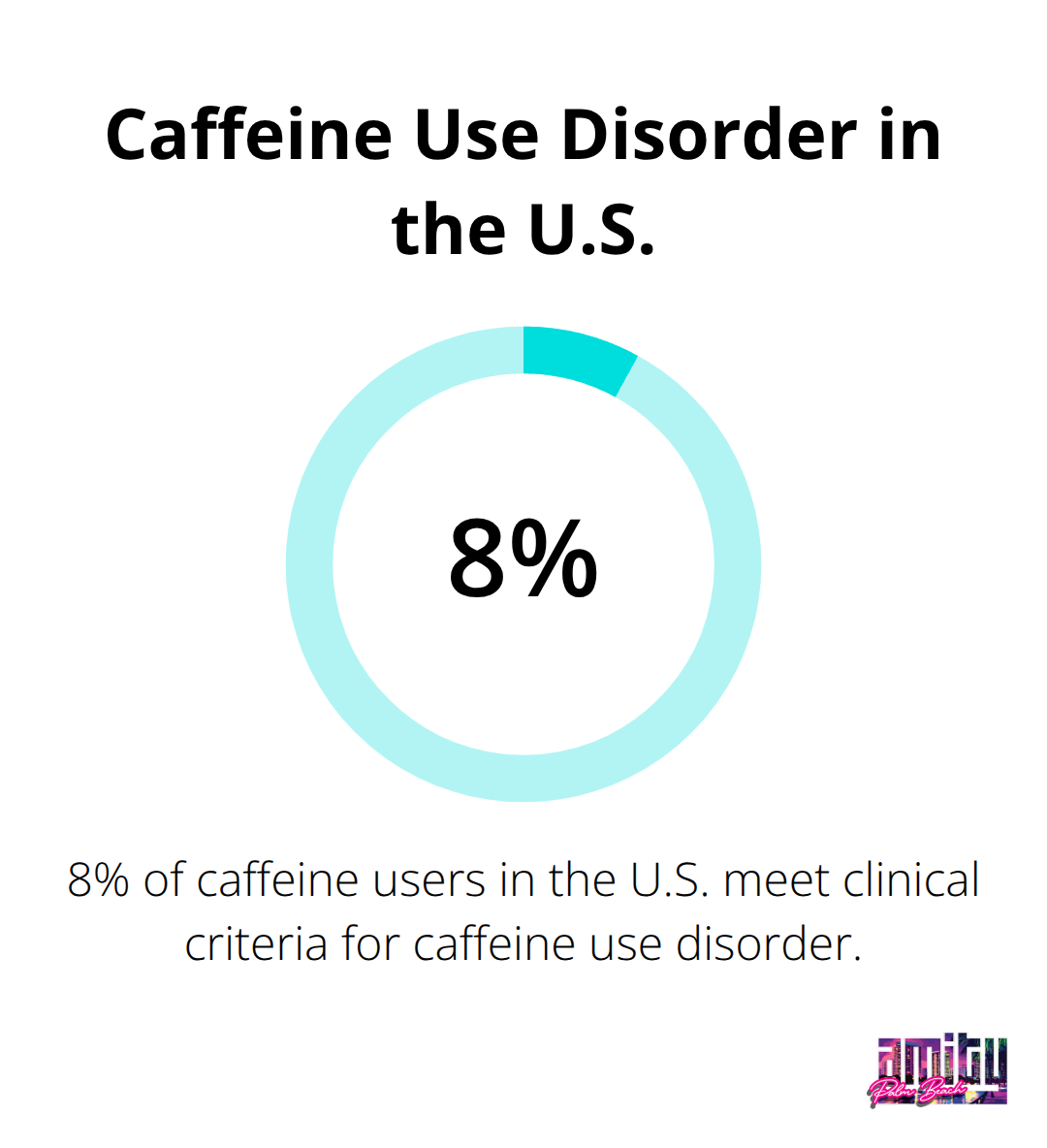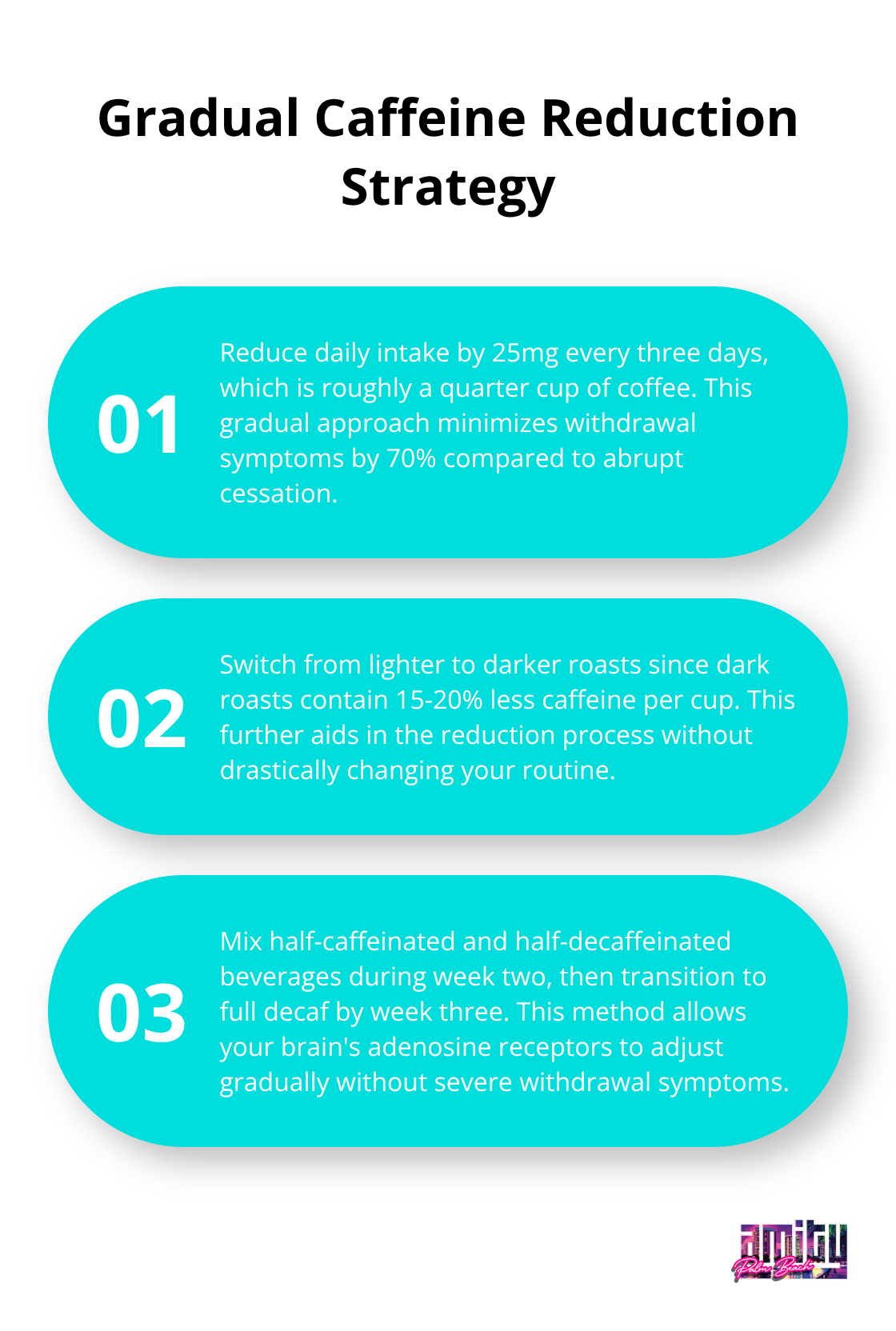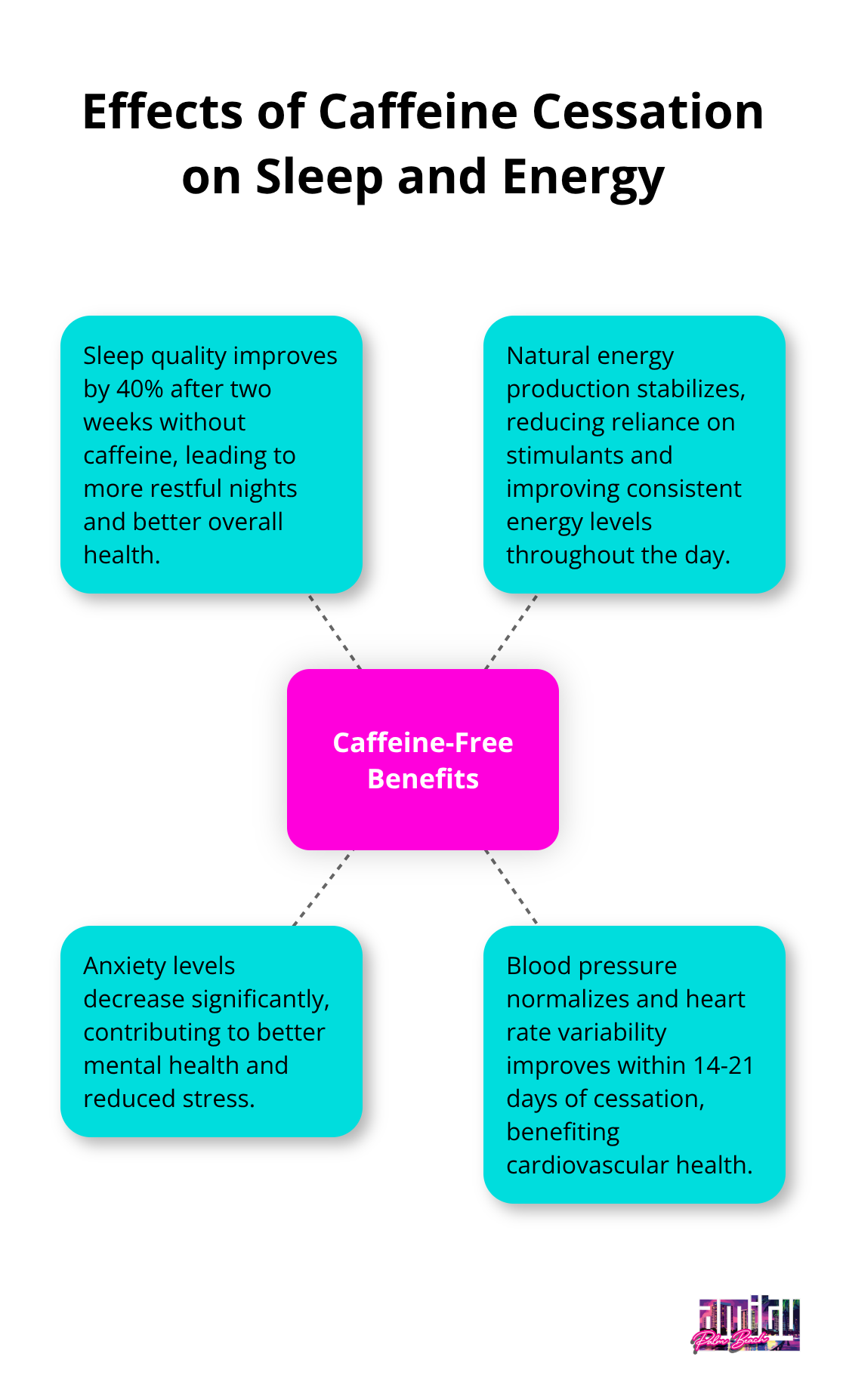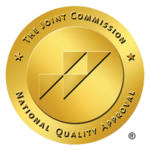Millions of Americans consume over 400mg of caffeine daily, far exceeding recommended limits. This dependency creates physical withdrawal symptoms and disrupts natural energy cycles.
We at Amity Palm Beach understand that caffeine addiction recovery requires a structured approach. Breaking free from caffeine dependence improves sleep quality, reduces anxiety, and restores your body’s natural energy production.
What Makes Caffeine Addiction Real
Recognizing True Caffeine Dependence
Johns Hopkins Medicine research shows that 8% of caffeine users in the U.S. meet clinical criteria for caffeine use disorder. The difference between casual consumption and addiction lies in specific behavioral patterns. True addiction manifests when you experience persistent cravings despite negative consequences, failed attempts to reduce intake, and impaired social or occupational function. Physical symptoms include consumption of more than 400mg daily, need for increased amounts to achieve the same effect, and withdrawal within 12-24 hours of your last dose.

How Caffeine Rewires Your Brain
Caffeine blocks adenosine receptors in your brain while it triggers dopamine release, which creates the alertness you feel. Regular use causes your brain to produce more adenosine receptors to compensate, which requires higher doses for the same effect. This neurological change explains why individuals in substance recovery consume coffee at higher rates than the general population. The World Health Organization classified caffeine addiction as a clinical disorder in 2012, which recognized these physical brain changes as legitimate medical concerns.
Physical Withdrawal Proves Dependence
Withdrawal symptoms peak between 20-51 hours after you stop caffeine and can last 2-9 days. The American Psychiatric Association recognizes caffeine withdrawal as a clinical condition, with symptoms that include severe headaches, fatigue, irritability, anxiety, and concentration problems. These symptoms occur because your brain must readjust adenosine receptor levels after chronic stimulation. Unlike casual habits, true caffeine addiction produces measurable physical distress that interferes with daily function when consumption stops.
The Tolerance Trap
Regular caffeine users develop tolerance quickly, which means they need progressively larger amounts to achieve the same alertness. This tolerance develops because chronic caffeine use increases the number of adenosine receptors in your brain. What started as one cup of coffee becomes three or four cups just to feel normal. The average American consumes over 200mg of caffeine daily, but those with dependence often exceed 600mg (equivalent to six cups of coffee). This escalation pattern distinguishes addiction from moderate use.
Once you understand these addiction mechanisms, you can choose the most effective strategy to break free from caffeine dependence.
How Should You Quit Caffeine
Choose Gradual Reduction Over Cold Turkey
Gradual reduction beats the cold turkey approach for most people who attempt caffeine recovery. Research from the American Academy of Sleep Medicine shows that you minimize withdrawal symptoms by 70% when you taper your intake over several weeks compared to abrupt cessation. Start by reducing your daily intake by 25mg every three days (roughly a quarter cup of coffee). Switch from lighter to darker roasts since dark roasts contain 15-20% less caffeine per cup. Mix half-caffeinated and half-decaffeinated beverages during week two, then transition to full decaf by week three. This method allows your brain’s adenosine receptors to adjust gradually without severe withdrawal symptoms.

Manage Physical Withdrawal Symptoms
Withdrawal headaches affect 2-30% of people who quit caffeine and result from changes in blood flow to the brain. The University of Vermont found that you reduce headache severity by 40% when you stay hydrated with 8-10 glasses of water daily. Over-the-counter NSAIDs like ibuprofen work effectively for withdrawal headaches, but limit use to prevent rebound effects. Fatigue peaks between 20-51 hours after your last dose and can persist for up to nine days. Combat this by increasing sleep to 8-9 hours nightly and taking 20-minute power naps when possible. Light exercise like walking boosts natural energy production and reduces irritability by 30% according to studies on caffeine withdrawal management.
Replace Caffeine with Effective Substitutes
Herbal teas provide the ritual of hot beverages without caffeine content. Peppermint tea offers natural energy through menthol, while ginseng tea provides sustained alertness without the crash. Green tea contains less caffeine than coffee due to different brewing processes and extraction methods, which makes it an excellent stepping stone during gradual reduction. Sparkling water with natural fruit flavors satisfies the need for flavorful beverages throughout the day. For morning energy, try a combination of B-complex vitamins and magnesium supplements, which support natural energy production without stimulants. Cold water with lemon provides immediate alertness through temperature shock and vitamin C absorption.
Track Your Progress and Adjust
Monitor your daily caffeine intake through a journal to identify hidden sources and track consumption levels. Unexpected sources like sodas, energy drinks, and chocolate can sabotage your reduction efforts. Calculate total daily intake from all sources and reduce systematically. Note withdrawal symptoms, energy levels, and mood changes to identify patterns. This data helps you adjust your tapering schedule if symptoms become too severe. Most people feel normal again within two weeks after complete cessation, but individual metabolism affects this timeline.
These practical strategies prepare you for the next phase: building sustainable habits that support long-term recovery without caffeine dependence.
How Do You Build Lasting Recovery Habits
Establish Energy-Based Morning Routines
Your morning routine determines energy levels for the entire day without caffeine dependence. Start with 16 ounces of cold water immediately upon waking to activate your nervous system and combat dehydration-related fatigue. The National Heart, Lung, and Blood Institute recommends 7-9 hours of sleep nightly, but consistency matters more than duration. Set a fixed wake time seven days per week, even on weekends, to regulate your circadian rhythm. Light exposure within 30 minutes of waking triggers cortisol production and natural alertness. Take a 10-minute walk outside or sit near a bright window to activate this biological response. Studies show that cold showers for 2-3 minutes increase norepinephrine levels by 530%, which provides sustained energy without stimulants.
Address Sleep Architecture and Natural Energy Cycles
Poor sleep quality drives caffeine dependence more than any other factor. Caffeine consumption reduces total sleep time by 45 minutes and sleep efficiency by 7%, creating a vicious cycle of dependency. Install blackout curtains and maintain bedroom temperature between 65-68 degrees Fahrenheit to optimize sleep quality. Remove all screens 2 hours before bedtime since blue light suppresses melatonin production by 23% (according to Harvard Medical School research). Magnesium supplementation at 200-400mg nightly improves sleep onset time and reduces morning fatigue. Address underlying health issues like sleep apnea or thyroid dysfunction that masquerade as energy problems that require caffeine fixes. Blood work should include B12, iron, and vitamin D levels since deficiencies in these nutrients cause chronic fatigue that people often self-medicate with caffeine.

Create Accountability Systems That Work
Track your progress through specific metrics rather than subjective feelings. Monitor sleep quality, energy levels from 1-10 daily, and physical symptoms in a recovery journal. Share your caffeine-free goal with three people who will check your progress weekly. Join online communities focused on caffeine recovery where members report daily successes and challenges. Set milestone rewards at 7 days, 30 days, and 90 days caffeine-free to maintain motivation. Schedule monthly check-ins with a healthcare provider or counselor who understands addiction recovery. Professional support becomes essential if you experience severe anxiety or depression that lasts beyond two weeks after withdrawal.
Final Thoughts
Caffeine addiction recovery requires commitment to proven strategies that address both physical dependence and underlying energy issues. The gradual reduction method minimizes withdrawal symptoms while your brain adjusts adenosine receptor levels naturally. Consistent sleep schedules, morning hydration routines, and natural energy sources create sustainable habits that eliminate the need for stimulants.
Recovery delivers measurable benefits within weeks. Sleep quality improves by 40% after two weeks without caffeine, anxiety levels decrease significantly, and natural energy production stabilizes. Your cardiovascular system experiences reduced stress as blood pressure normalizes and heart rate variability improves (studies show these changes occur within 14-21 days of cessation).
Professional support accelerates recovery success, especially when caffeine dependence co-occurs with anxiety or depression. We at Amity Palm Beach provide comprehensive addiction treatment that addresses substance dependencies alongside mental health conditions. Track your progress through daily energy levels, sleep quality metrics, and mood stability to maintain long-term caffeine addiction recovery success.




